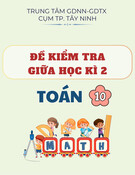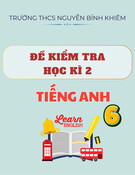
TRƯỜNG ................
KHOA………
…………..o0o…………..
Tuyển tập các đề thi của các
nước trên thế giới P1 - Cao
Minh Quang

PREFACE
Collecting the Mathematics tests from the contests choosing the best students is not
only my favorite interest but also many different people’s. This selected book is an adequate
collection of the Math tests in the Mathematical Olympiads tests from 14 countries, from
different regions and from the International Mathematical Olympiads tests as well.
I had a lot of effort to finish this book. Besides, I’m also grateful to all students
who gave me much support in my collection. They include students in class 11 of specialized
Chemistry – Biologry, class 10 specialized Mathematics and class 10A2 in the school year
2003 – 2004, Nguyen Binh Khiem specialized High School in Vinh Long town.
This book may be lack of some Mathematical Olympiads tests from different
countries. Therefore, I would like to receive both your supplement and your supplementary
ideas. Please write or mail to me.
• Address: Cao Minh Quang, Mathematic teacher, Nguyen Binh Khiem specialized
High School, Vinh Long town.
• Email: kt13quang@yahoo.com
Vinh Long, April 2006
Cao Minh Quang

☺ The best problems from around the world Cao Minh Quang
2
Abbreviations
AIME American Invitational Mathematics Examination
ASU All Soviet Union Math Competitions
BMO British Mathematical Olympiads
CanMO Canadian Mathematical Olympiads
INMO Indian National Mathematical Olympiads
USAMO United States Mathematical Olympiads
APMO Asian Pacific Mathematical Olympiads
IMO International Mathematical Olympiads

☺ The best problems from around the world Cao Minh Quang
3
CONTENTS
Page
Preface................................................................................................................................. 1
Abbreviations ...................................................................................................................... 2
Contents............................................................................................................................... 3
PART I. National Olympiads .......................................................................................... 17
1. AIME (1983 – 2004) ..................................................................................................... 17
1.1. AIME 1983............................................................................................................ 18
1.2. AIME 1984............................................................................................................ 20
1.3. AIME 1985............................................................................................................ 21
1.4. AIME 1986............................................................................................................ 23
1.5. AIME 1987............................................................................................................ 24
1.6. AIME 1988............................................................................................................ 25
1.7. AIME 1989............................................................................................................ 26
1.8. AIME 1990............................................................................................................ 27
1.9. AIME 1991............................................................................................................ 28
1.10. AIME 1992.......................................................................................................... 29
1.11. AIME 1993.......................................................................................................... 30
1.12. AIME 1994.......................................................................................................... 32
1.13. AIME 1995.......................................................................................................... 33
1.14. AIME 1996.......................................................................................................... 35
1.15. AIME 1997.......................................................................................................... 36
1.16. AIME 1998.......................................................................................................... 37
1.17. AIME 1999.......................................................................................................... 39
1.18. AIME 2000.......................................................................................................... 40
1.19. AIME 2001.......................................................................................................... 42
1.20. AIME 2002.......................................................................................................... 45
1.21. AIME 2003.......................................................................................................... 48
1.22. AIME 2004.......................................................................................................... 50
2. ASU (1961 – 2002)......................................................................................................... 51
2.1. ASU 1961 .............................................................................................................. 52
2.2. ASU 1962 .............................................................................................................. 54
2.3. ASU 1963 .............................................................................................................. 55
2.4. ASU 1964 .............................................................................................................. 56
2.5. ASU 1965 .............................................................................................................. 57
2.6. ASU 1966 .............................................................................................................. 59
2.7. ASU 1967 .............................................................................................................. 60
2.8. ASU 1968 .............................................................................................................. 61
2.9. ASU 1969 .............................................................................................................. 63
2.10. ASU 1970 ............................................................................................................ 64
2.11. ASU 1971 ............................................................................................................ 65
2.12. ASU 1972 ............................................................................................................ 67
2.13. ASU 1973 ............................................................................................................ 68
2.14. ASU 1974 ............................................................................................................ 70
2.15. ASU 1975 ............................................................................................................ 72
2.16. ASU 1976 ............................................................................................................ 74
2.17. ASU 1977 ............................................................................................................ 76
2.18. ASU 1978 ............................................................................................................ 78
2.19. ASU 1979 ............................................................................................................ 80
2.20. ASU 1980 ............................................................................................................ 82
2.21. ASU 1981 ............................................................................................................ 84

☺ The best problems from around the world Cao Minh Quang
4
2.22. ASU 1982 ............................................................................................................ 86
2.23. ASU 1983 ............................................................................................................ 88
2.24. ASU 1984 ............................................................................................................ 90
2.25. ASU 1985 ............................................................................................................ 92
2.26. ASU 1986 ............................................................................................................ 94
2.27. ASU 1987 ............................................................................................................ 96
2.28. ASU 1988 ............................................................................................................ 98
2.29. ASU 1989 ........................................................................................................... 100
2.30. ASU 1990 ........................................................................................................... 102
2.31. ASU 1991 ........................................................................................................... 104
2.32. CIS 1992............................................................................................................. 106
2.33. Russian 1995 ..................................................................................................... 108
2.34. Russian 1996 ...................................................................................................... 110
2.35. Russian 1997 ...................................................................................................... 112
2.36. Russian 1998 ...................................................................................................... 114
2.37. Russian 1999 ...................................................................................................... 116
2.38. Russian 2000 ...................................................................................................... 118
2.39. Russian 2001 ...................................................................................................... 121
2.40. Russian 2002 ...................................................................................................... 123
3. BMO (1965 – 2004) ..................................................................................................... 125
3.1. BMO 1965............................................................................................................ 126
3.2. BMO 1966............................................................................................................ 127
3.3. BMO 1967............................................................................................................ 128
3.4. BMO 1968............................................................................................................ 129
3.5. BMO 1969............................................................................................................ 130
3.6. BMO 1970............................................................................................................ 131
3.7. BMO 1971............................................................................................................ 132
3.8. BMO 1972............................................................................................................ 133
3.9. BMO 1973............................................................................................................ 134
3.10. BMO 1974.......................................................................................................... 136
3.11. BMO 1975.......................................................................................................... 137
3.12. BMO 1976.......................................................................................................... 138
3.13. BMO 1977.......................................................................................................... 139
3.14. BMO 1978.......................................................................................................... 140
3.15. BMO 1979.......................................................................................................... 141
3.16. BMO 1980.......................................................................................................... 142
3.17. BMO 1981.......................................................................................................... 143
3.18. BMO 1982.......................................................................................................... 144
3.19. BMO 1983.......................................................................................................... 145
3.20. BMO 1984.......................................................................................................... 146
3.21. BMO 1985.......................................................................................................... 147
3.22. BMO 1986.......................................................................................................... 148
3.23. BMO 1987.......................................................................................................... 149
3.24. BMO 1988.......................................................................................................... 150
3.25. BMO 1989.......................................................................................................... 151
3.26. BMO 1990.......................................................................................................... 152
3.27. BMO 1991.......................................................................................................... 153
3.28. BMO 1992.......................................................................................................... 154
3.29. BMO 1993.......................................................................................................... 155
3.30. BMO 1994.......................................................................................................... 156
3.31. BMO 1995.......................................................................................................... 157
3.32. BMO 1996.......................................................................................................... 158

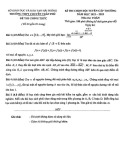
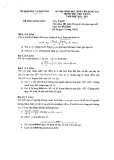
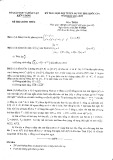
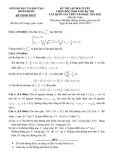
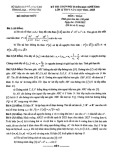
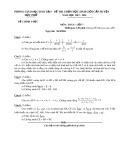
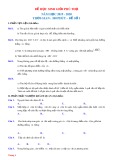
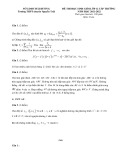
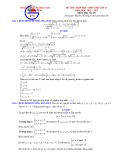
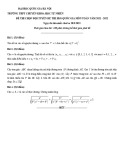

![Đề thi Tiếng Anh có đáp án [kèm lời giải chi tiết]](https://cdn.tailieu.vn/images/document/thumbnail/2025/20250810/duykpmg/135x160/64731754886819.jpg)




![Đề thi học kì 2 Vật lý lớp 11: Đề minh họa [Mới nhất]](https://cdn.tailieu.vn/images/document/thumbnail/2025/20250709/linhnhil/135x160/711752026408.jpg)
